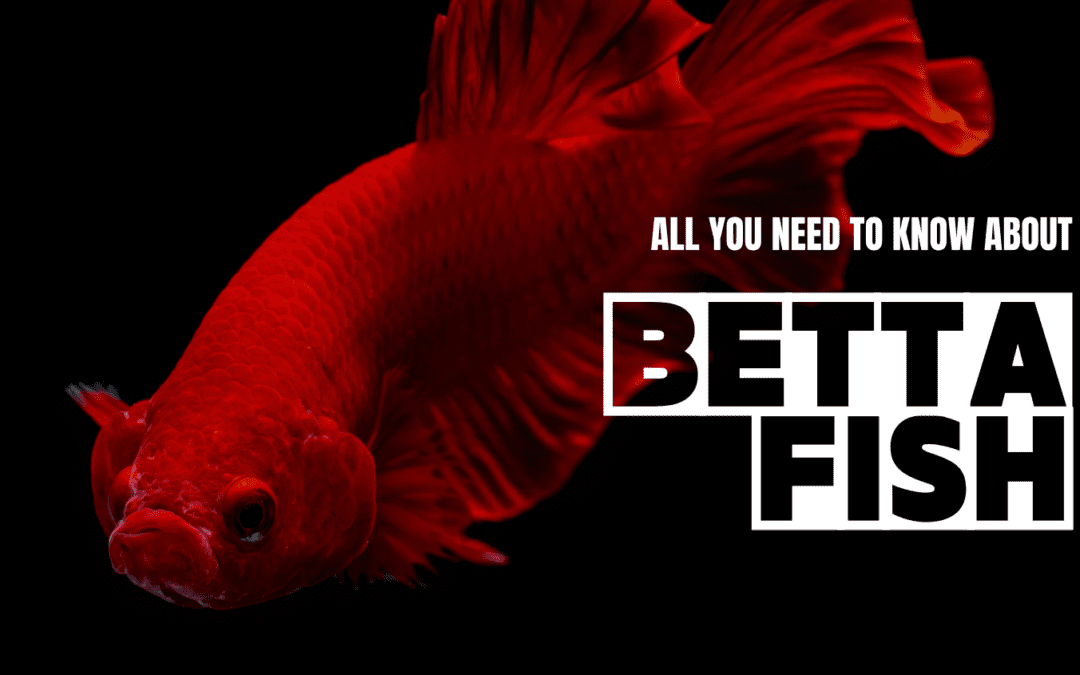One of the most commonly asked questions by betta fish keepers is, “What do betta fish eggs look like?” In this article, we will answer this question in detail and provide you with all the information you need to know about what do betta eggs look like. Including their appearance and their reproductive behavior. Another important concern What Do I Do With My Betta Eggs? is covered here.
Betta fish also known as Siamese fighting fish are one of the most popular aquarium fish species around the world. They are famous for their lively colors, long fins and aggressive behavior. Betta fish are fascinating creatures and their reproductive behavior is equally intriguing.
Understanding Betta Fish Reproduction
Before we explore into the appearance of beta fish eggs, let’s first understand how betta fish reproduce. Betta fish are oviparous which means they reproduce by laying eggs. The reproductive process in betta fish involves both males and females. So, it is crucial to understand the anatomy of both genders for their reproductive behavior knowledge.
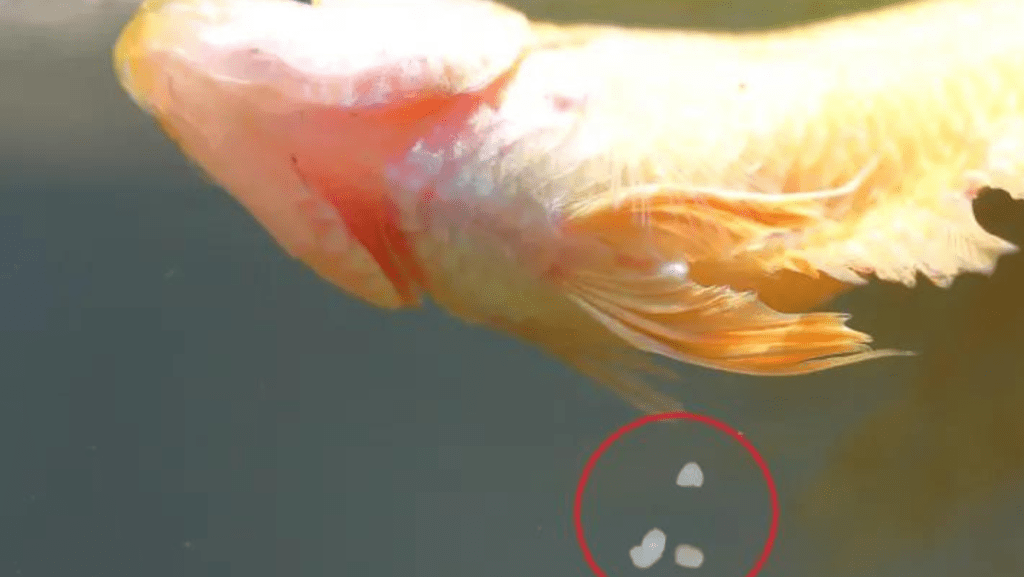
Betta Fish Reproductive Organs
The cylindrical body of a male betta fish has a prolonged anal fin that expands into a structure known as a gonopodium. During mating, this organ is utilised to inject sperm into the body of the female. The bodies of pregnant female betta fish are spherical, and their vaginal pores are small. During the spawning process, what do betta eggs look like are expelled through this pore. Read more for what do betta fish eggs look like?
Betta Fish Spawning Process
Betta fish spawning usually occurs when a male and female are placed in the same aquarium. The male will start building a bubble nest at the surface of the water using saliva and air. The female will then start releasing eggs which are picked up by the male and placed in the bubble nest. The process can last for several hours during which the male display aggressive behavior towards the female.
Fertilization of Beta Fish Eggs
The male will sprinkle sperm on the what do betta eggs look like once they have been released to fertilise them. The male will continue to take care of the fertilised eggs until they hatch after they stick to the bubble nest.
What Do Betta Fish Eggs Look Like?
Betta fish are known for their bright colors and flowing fins. They are also known for their unique breeding habits. If you are a betta fish owner or are considering becoming one.
- Appearance
Beta fish eggs are very small and usually opaque white in color. They are approximately 1-2mm in size and have sticky texture that allows them to attach to surfaces in the tank. When viewed under a microscope or magnifying glass you can see the tiny developing embryo inside the egg.
- Location
Betta fish will typically lay their eggs on a flat surface such as a leaf, plant or even the tank wall. Once laid, what do betta eggs look like will stick to the surface and begin to develop. If the eggs are not fertilized they will typically turn white and become fuzzy within a few days. Fertilized eggs will remain clear and develop into baby betta fish within a few days.
- Quantity
Betta fish can lay anywhere from a few dozen to several hundred eggs at a time depending on the size and age of the female. It is important to note that not all of the eggs will necessarily hatch and develop into viable fish.
- Fertilized Betta Fish Eggs
Betta fish eggs that have undergone fertilization are oval shaped and measure just 2 to 3 millimeters in diameter. The embryo is located in a tiny, black speck in the center of these translucent structures. You begin to notice small veins extending from the embryo after a few days. This indicates that the embryo is growing and that the egg has been fertilized. Read more for what do betta fish eggs look like?
It’s critical to retain the fertilized eggs in a separate breeding tank with clean water after fertilization. The water needs to be well-aerated and kept at a temperature of 80 to 82 degrees Fahrenheit. The eggs will hatch into tiny, translucent fry after 24 to 36 hours, and this fry will require a particular diet of infusoria or other small living meals.
- Unfertilized Betta Eggs
The appearance of fertilized and unfertilized betta eggs is remarkably similar. They are translucent and the same size, shape, and color. They won’t develop veins or hatch into fry, though, and they lack the black spot in the center. It’s likely that some of the eggs in your breeding tank are unfertilized if you find that they are not changing or maturing.
- Eggs Infected with Fungi
Betta fish eggs can occasionally develop a fungal infection. Infected eggs shift from being clear to white or gray and have a fuzzy or cottony appearance. You should remove any eggs that have fungus from the breeding tank right away. The growing embryos can be fatally affected by fungus infections, which can spread fast to healthy eggs.
It’s crucial to maintain clean, well-aerated water in the breeding tank to avoid fungal diseases. Methylene blue can also be added in small amounts to the water to assist stop the growth of fungus.
What Should I Do If the Eggs Don’t Change?
It is likely that they were not fertilized if the eggs in your breeding tank do not change or develop after a few days. In this situation, you should take them out of the tank to stop the spread of any fungi. You can attempt fertilization once more using a different pair of betta fish. Otherwise, you might think about speaking with a breeder or veterinarian to find out if there are any underlying problems.
It can be exciting and fulfilling to breed betta fish, but it’s crucial to know what to expect from the eggs. You can improve your chances of successful breeding by learning how fertilized and unfertilized eggs look and how to avoid fungal infections.

How Many Eggs Betta Fish Lay
The answer to this question depends on a few different factors.
Betta fish Females
Betta fish females are able to lay anywhere between 10 and 100 eggs at once. Their age, size and health are just a few of the variables that will affect how many eggs they lay.
Betta fish Males
Although male betta fish do not lay eggs, they are in charge of fertilizing the females’ eggs. At the water’s surface, male betta fish create bubble nests. The fertilized eggs and the subsequent fry will be taken care of by them.
Breeding Betta Fish
If you are breeding betta fish then it is important to be prepared for the number of eggs that the female lay. You will need to have a plan for caring for the resulting fry as well as enough space to house them as they grow. Read more for what do betta fish eggs look like?
Betta Fish Egg Care
If you are planning to breed betta fish, it is essential to provide the proper care and conditions for their eggs. Here are some critical things to keep in mind: (Pictures of fish eggs
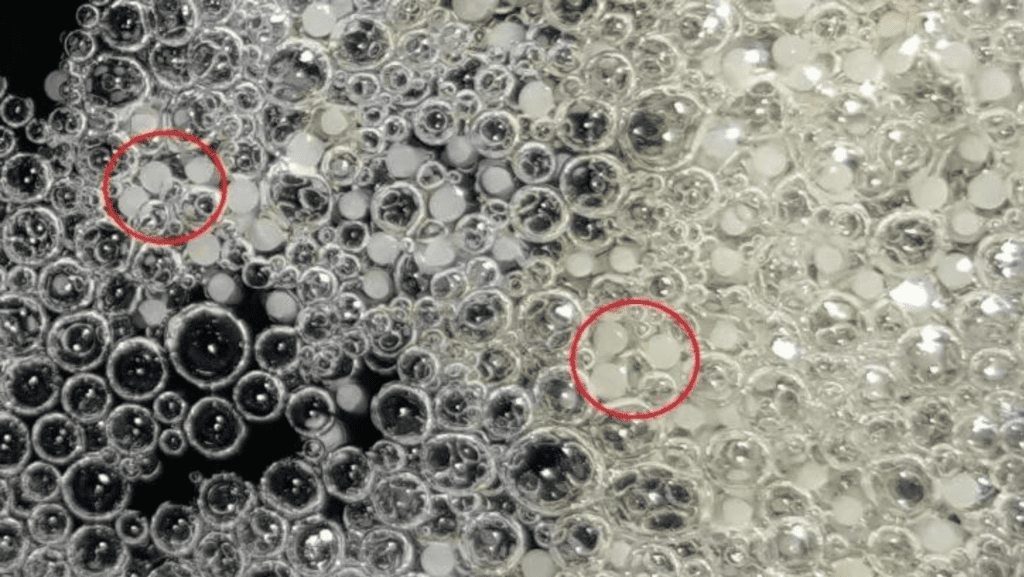
Provide a Suitable Breeding Tank
To breed betta fish successfully you will need a separate breeding tank. This tank should be small, shallow and well-filtered. Tank should have a temperature of around 80°F. It should also be dimly lit as this will encourage the fish to breed.
Add a Breeding Mop
Due to their sticky nature betta fish eggs will betta bubble nest with eggs adhere to any surface they come into touch with. A breeding mop must be present in the breeding tank in order to prevent the eggs from being damaged or eaten. This mop should be slowly swirled in the water to entice the female to lay her eggs on it. It can be constructed of materials like yarn or netting.
Monitor the Water Quality
Having high-quality water is essential for betta fish breeding. Keep the water clean and wholesome for the developing eggs by doing regular water tests and water changes as necessary.
Provide Proper Nutrition
Specific nutrients are needed for betta fish eggs to develop properly. Baby brine shrimp or other tiny, protein-rich items must be fed to the fry in order to promote their healthy growth and development.
Maintain Proper Temperature
Betta fish eggs will require a consistent temperature of around 80°F to develop correctly. Use a heater and thermometer to maintain the correct temperature in the breeding tank. Avoid sudden temperature changes, which can harm the developing eggs and fry.
Provide Oxygen
During the hatching process, the eggs will require plenty of oxygen to develop correctly. You can use an air stone or a sponge filter to ensure there is adequate oxygenation in the tank. You can also reduce the water level slightly to allow for more surface agitation, which will increase the oxygen exchange.
Monitor the Eggs
During the incubation period, it is essential to monitor the eggs regularly. Check for any signs of fungus, which can quickly spread and destroy the eggs. Remove any damaged or dead eggs to prevent further contamination.
Feed the Fry
Once the fry hatch, you will need to feed them tiny food particles such as infusoria or brine shrimp nauplii. Gradually increase the size of the food particles as the fry grow. Keep the water clean and perform frequent water changes to maintain good water quality.
Separate the Fry
Betta fish fry can be aggressive towards each other, so it is essential to separate them into individual containers as they grow. Keep the containers clean and perform frequent water changes to maintain good water quality. You can also add live plants to the containers, which will provide shelter and improve water quality.
Patience and Perseverance
Breeding betta fish requires patience and perseverance. It take several attempts to successfully breed your betta fish pair and even then, not all of the eggs will hatch successfully. With the right conditions and care, however, you can increase your chances of success and raise healthy betta fish fry.
Hatching Betta Eggs:
The little fry that emerges from the Betta eggs after 24-48 hours will be affixed to the underside of the surface where they were laid. For another 24-48 hours, the fry will stay in this position and continue to eat yolk sacs until they are strong enough to swim independently.
To ensure the fry’s survival after they have separated from the surface, it is crucial to take the appropriate care of them. The following advice is on how to take care of betta fry:
proper care to ensure their survival. Here are some tips on how to care for Betta fry:
- Feed the fry a high-quality diet of live or frozen baby brine shrimp, micro worms or other small live foods.
- Change 20% of the water every day to maintain water quality.
- Use a gentle water flow to prevent the fry from being removed.
- Provide the fry with plenty of hiding places to reduce stress and promote natural behavior.
Betta Fish Breeding Behavior
When it comes to breeding betta fish, courtship and mating can be a lengthy and complex process. In this article, we will discuss the key highlights of this behavior, especially as it relates to caring for the eggs of betta fish.
Also betta fish behavior before death is covered in another article.
show me a picture of a betta fish:
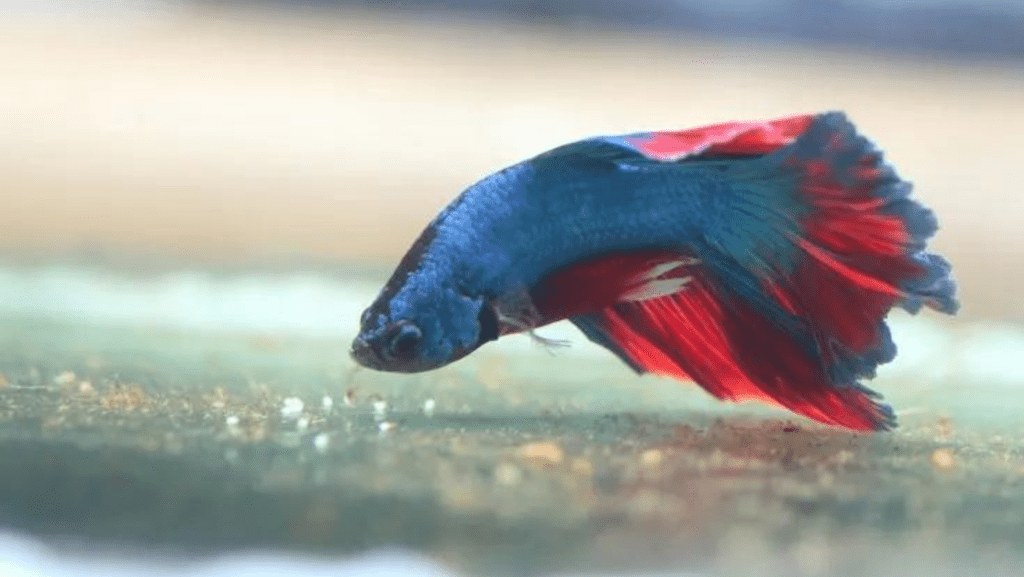
Male Betta Behavior During Breeding
Betta fish males are known to be aggressive and territorial, making it crucial to keep only one male in a tank. Moreover, males can also be aggressive towards females, so it is advisable to keep them together for short periods when breeding.
When introducing your breeding pair, be prepared for a period of chasing and mild fighting, which can last between 2 to 4 hours. It is important to monitor this behavior closely and separate the pair if the male shows excessive aggression such as constant biting. You can separate them using a tank divider or separate tanks.
Why Betta Fish Build Bubble Nests
During courtship, the male betta fish will start to build a bubble nest as it is his responsibility to care for the eggs and fry once they hatch. The male produces mucus from his pharyngeal organ to create the bubble nest, which is located near the surface of the water.
The bubble nest is essential for keeping the eggs well-oxygenated while protecting them from temperature changes. This behavior evolved in wild bettas as a way to rear young in shallower areas with lower oxygen levels, where they can avoid predators.
Betta Mating and Egg Fertilization
Prior to mating, the male continue to chase the female in a courtship dance that appear aggressive. They flare their fins repeatedly until they curl around each other.
During this embrace, the female will release her eggs as the male releases his milt and this process can last for around three hours. After mating, it is essential to remove the female from the tank, as the male become aggressive towards her again. Additionally, the female eat her own fertilized eggs, while the male eat unviable or unfertilized eggs.
Incubation Behavior in Betta Mouthbrooders
While Betta splendens, known for building bubble nests, is the most common betta species in home aquariums, there are other bettas, such as Betta macrostoma and Betta simplex, that are mouthbrooders.
Mouthbrooding bettas carry their eggs in their mouths until they hatch, as a way to protect them from predators and other threats. This behavior allows the male betta to closely guard their eggs and unlike bubble nest builders, they can move wherever they need to avoid danger.
Mouthbrooding bettas have larger eggs than bubble nest builders and they also produce bigger offspring. They evolved this way of caring for their eggs to cope with areas with stronger currents where bubble nests are too difficult to build, although they have also been found in similar places as bubble nest builders.
betta fish egg spot:
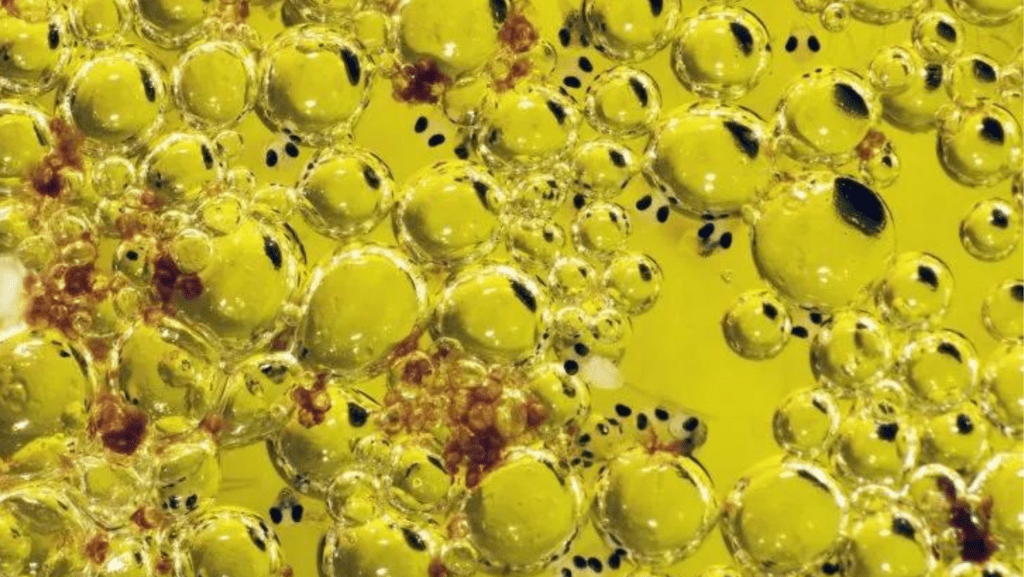
Conclusion
Betta fish eggs are an essential part of the reproduction process of these beautiful creatures. Understanding the reproductive behavior of betta fish, as well as the anatomy of both males and females, is crucial in knowing what betta fish eggs look like. Betta fish eggs are small opaque white and have a slightly sticky texture, allowing them to attach to surfaces in the tank. Fertilized eggs have a black spot in the center and will develop veins, while unfertilized eggs will not develop and will likely turn white and fuzzy. It is important to keep the breeding tank clean, well-aerated and at the appropriate temperature to ensure successful fertilization and hatching. By understanding what betta fish eggs look like and their characteristics, betta fish owners can better care for their pets and ensure successful reproduction.

